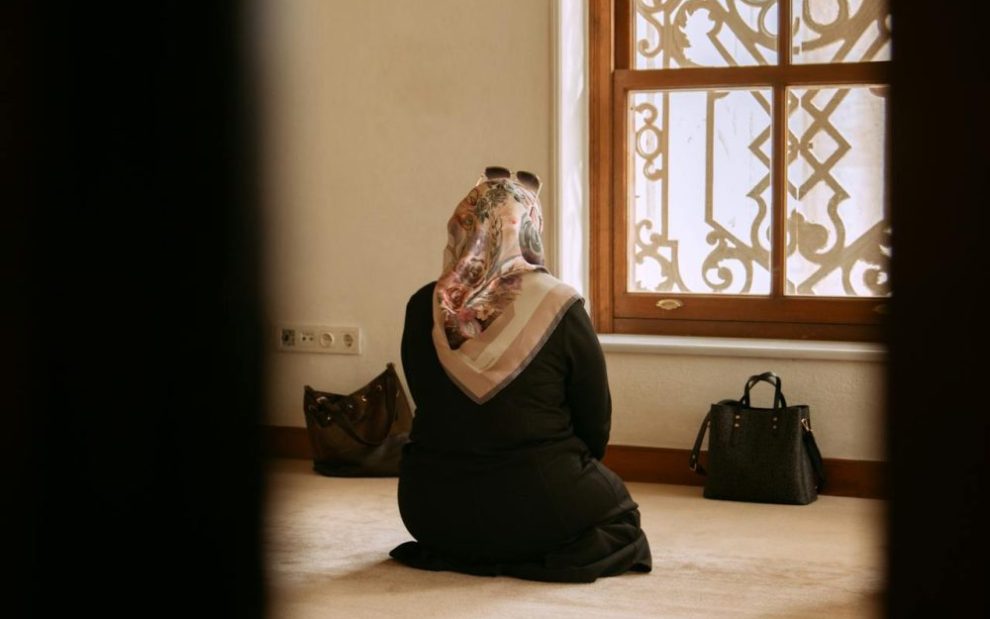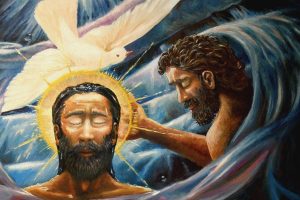Prophet Muhammad was no stranger to death. He buried his own six children. Three of them died in infancy and three others in young adulthood. His only surviving child—daughter Fatima—died six months after him. His father died before he was born. His mother died when he was 6 years old, leaving him as an orphan. His beloved grandfather Abdulmuttalib died shortly while he was in his care. His beloved wife Khadija and his uncle Abu Talib—who was his sole protector against Meccan persecution—both died in the same year.
Scholars speculate that Khadija died early probably due to malnourishment from the three-year boycott that left the early Muslim community to starvation. This time of anguish and sadness has been known in Islamic history as the “Year of Sorrow.” The Prophet’s dear uncle Hamza was not only brutally killed during war but his body was also shamefully mutilated. Many of his friends and companions were tortured in front of his eyes. The Prophet Muhammad had to also witness the abhorrent pre-Islamic practice of female infanticide which the Qur’an ultimately prohibited. Mortality rates were high in the premodern harsh desert environment of the seventh century.
Grief was a constant in the Prophet’s life. As an adult man, he often returned to his mother’s grave to honor and remember her. His companions saw him weeping and were moved to tears.
For Muslims then and now, Prophet Muhammad continues to be a source of light, guidance, and comfort in the midst of their own sadness and grief.
My son died in infancy. My 3-year old daughter Meryem was tragically killed by a truck. I will never get over it, but I am slowly learning to integrate this tragedy into my life. As a grieving Muslim mother, I look up to Prophet Muhammad in my constant sorrow and heartache. I turn to his holy narrations describing his own anguish. One account of the impending death of his 2-year-old son Ibrahim, as relayed in Muhammad Husayn Haykal’s The Life of Muhammad, moved me to tears:
With tears in his eyes he talked once more to the dead child: “O Ibrahim, were the truth not certain that the last of us will join the first, we would have mourned you even more than we do now.” A moment later he said: “The eyes are shedding tears and the heart is saddened, but we do not say anything except that which pleases our Lord. Indeed, O Ibrahim, we are saddened by your departure from us.”
Reading these and many more eyewitness accounts from the Prophet’s life comforted me as a mother in so many ways. These were public documents accessible to all at all times. They demonstrated that grief was a public affair. It was a human and universal feeling. Grief was not a medical condition to be treated or singled out. As a human being, as a man, as a parent, as a person of utmost love and conviction to God, Prophet Muhammad gave himself permission to feel his sadness, shed tears in public, and express his sorrow. On one occasion, one of his companions was puzzled when seeing the Prophet of God cry to which he responded that shedding tears is an expression of God’s mercy. A tender and soft heart is a blessing from God. His understanding of sacred manhood and strong masculinity includes the courage to be vulnerable. Real men can cry. People of strong faith can shed tears.
Prophet Muhammad allows himself to be fully human and whole by holding space for all emotions. There is no anger, no wailing, no doubt, no questioning. I see in him ultimate surrender, trust, acceptance, contentment, and peace with God’s decree. These are attitudes Muslims strive for—to be at peace with oneself and life’s circumstances that are beyond human control. Despite the agony of witnessing his six children die, his integrity and certainty in the afterlife remain unshaken. Muslims affirm that the Prophet witnessed the heavenly realm during the holy Night Journey (mi’raj). He saw Prophet Abraham surrounded by deceased young children playing in the gardens of Paradise. He came back to deliver the good news of hope and a future yet to come. Our children are alive. They are safe. They are rejoicing over their return to their celestial home. We will join and reunite with them.
Death is a transition—not the end. In the words of Muslim theologian Bediüzzaman Said Nursi:
Death is not destruction, or nothingness, or annihilation; it is not cessation or extinction; it is not eternal separation, or non-existence, or a chance event; it is not authorless obliteration. Rather, it is to be discharged by the Author who is All-Wise and All-Compassionate; it is a change of abode. It is to be dispatched to eternal bliss, to your true home.
These are the prophetic teachings that continue to sustain bereaved Muslim parents like me in their agony. They are the reason why Muslim Grandfather Khaled Nabhan whose grandchildren were murdered in Gaza can still find joy and be a beacon of light for others. Similarly, Muslim father Dr. Abdul Munim Jitmoud drew on prophetic inspiration in being able to not only forgive but also embrace his son’s killer. It is through Muslims like these from whom we receive a glimpse of the beauty and spiritual impact of prophetic character and wisdom.
By worldly standards, Prophet Muhammad lived the most miserable life. He was poor, orphaned, faced ridicule and persecution by his own people. He endured starvation, exile and conflict and experienced death. Yet, he is known to Muslims as the Most Beloved of God (habibullah). His moral and spiritual legacy endures. Prophet Muhammad’s example is a meaning-making map to navigate life and death. In the words of the late Imam and Muslim chaplain Sohaib Sultan, the Prophet not only showed his followers the art of living but also the art of dying with grace and dignity.
In a similar vein, the lives of saints serve believers as sources of comfort. For example, known for her “Little Way” of spiritual simplicity and love, Saint Therese of Lisieux faced illness and death with profound faith. Her writings, particularly her reflections on suffering and dying, offer comfort to those grieving. Her acceptance of suffering as part of God’s plan mirrors the Muslim view of surrender to divine will if all human interventions are exhausted. Many saints also displayed their suffering openly. For instance, the public mourning of St. Teresa of Calcutta (Mother Teresa) and her deep compassion for the suffering underscore the human connection through grief and faith.
Grief and death are universal human experiences. The experiences of Prophet Muhammad and Catholic saints in dealing with grief and loss offer valuable interreligious insights. They reflect a shared understanding of suffering as a profound part of the human experience and provide pathways for finding comfort and meaning. By recognizing these parallels, individuals from different faith backgrounds can find common ground in their struggles with grief and draw strength from the spiritual wisdom offered by both Muslim and Christian traditions.
Image: Pexels/Meruyert Gonullu













Add comment